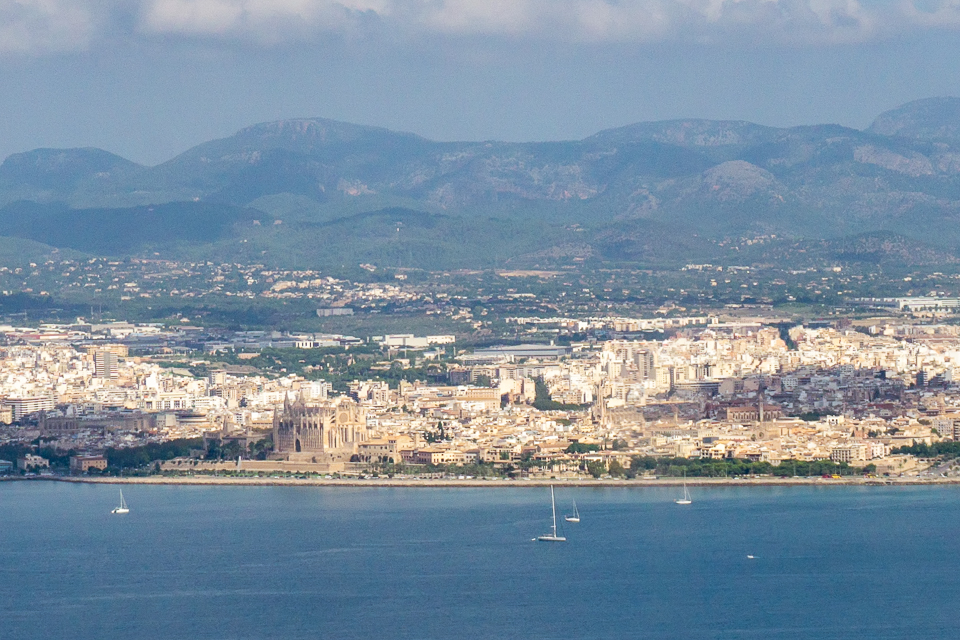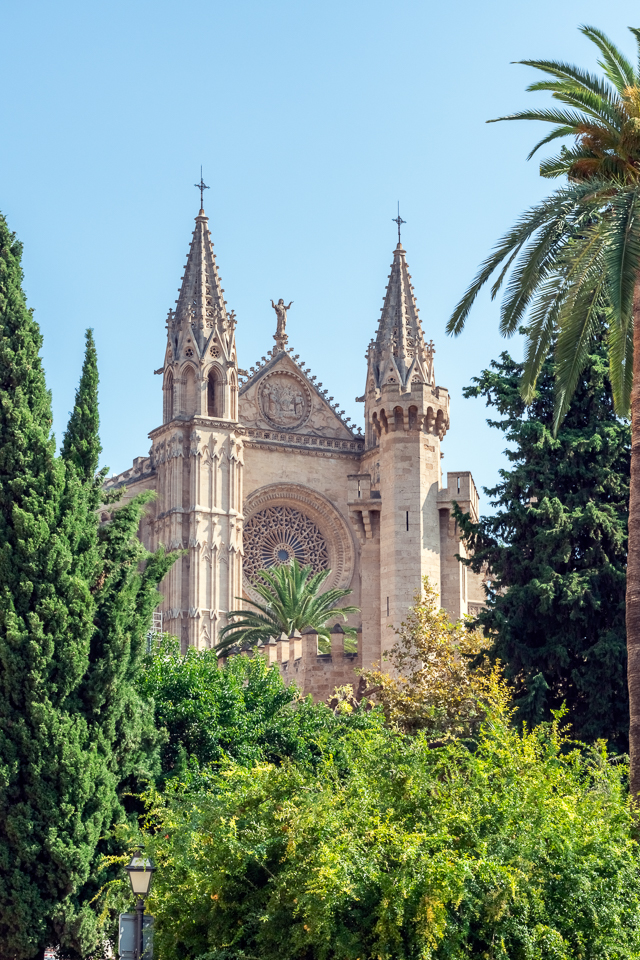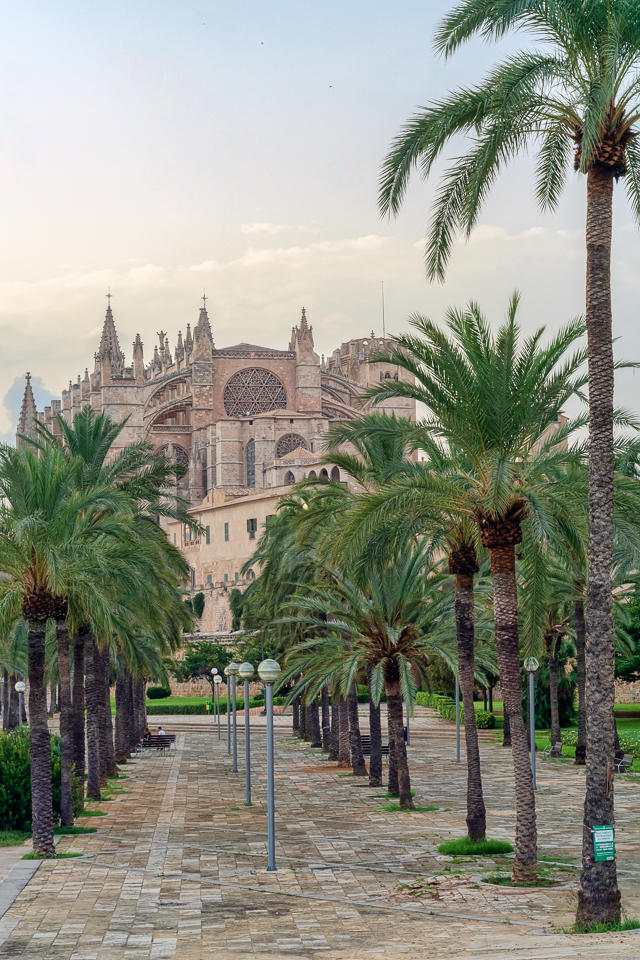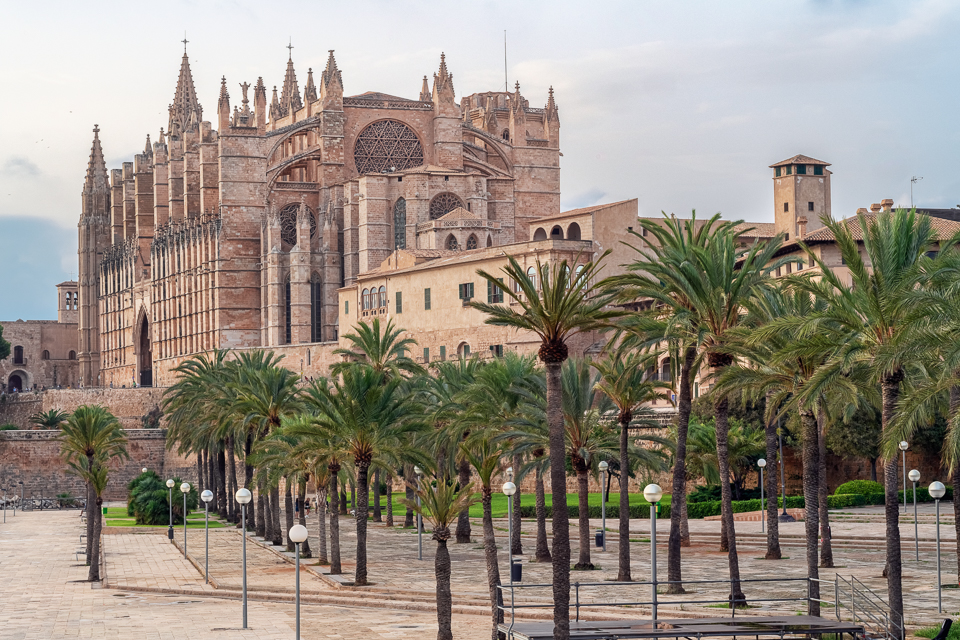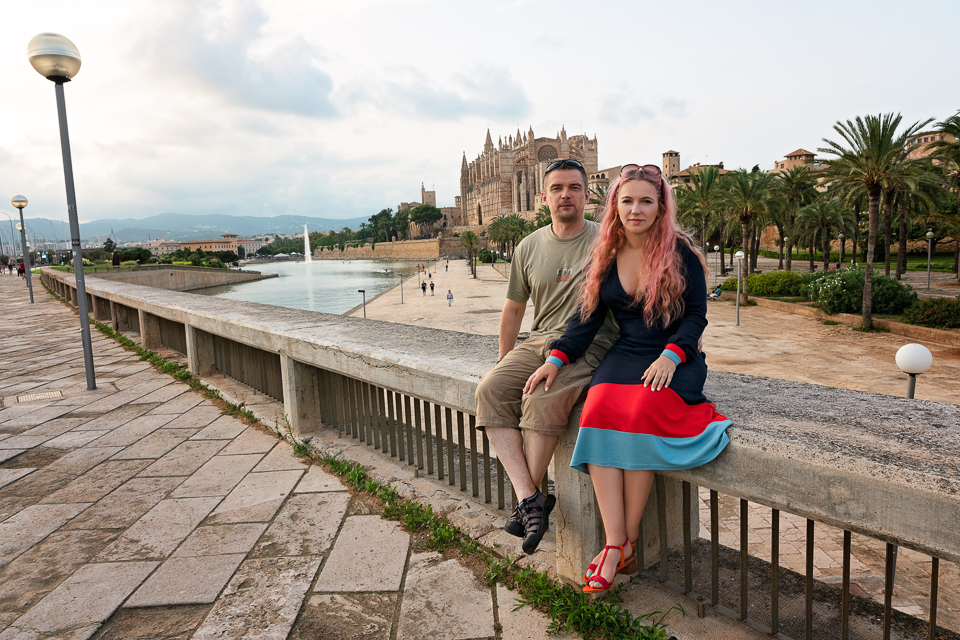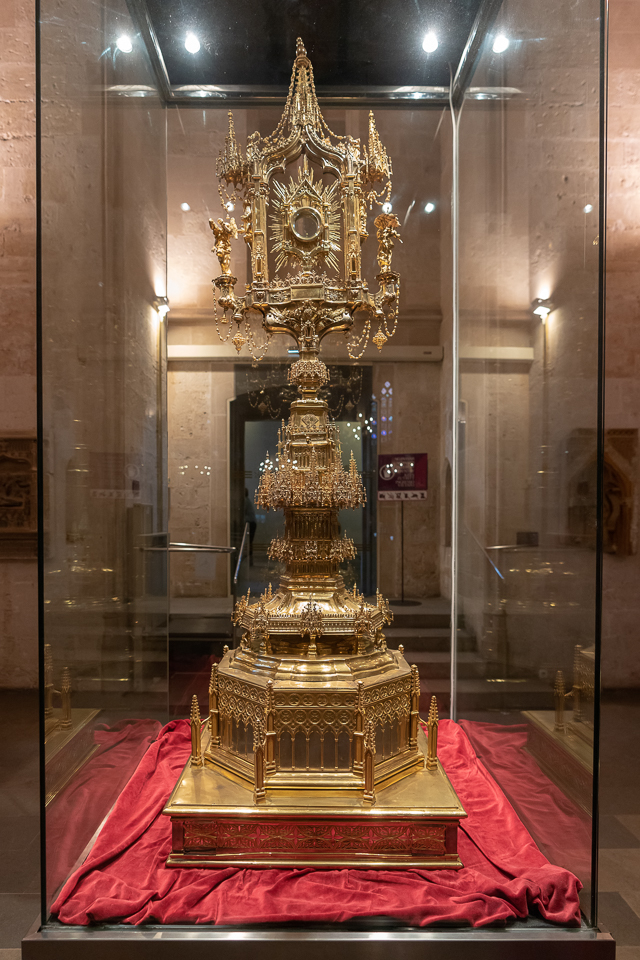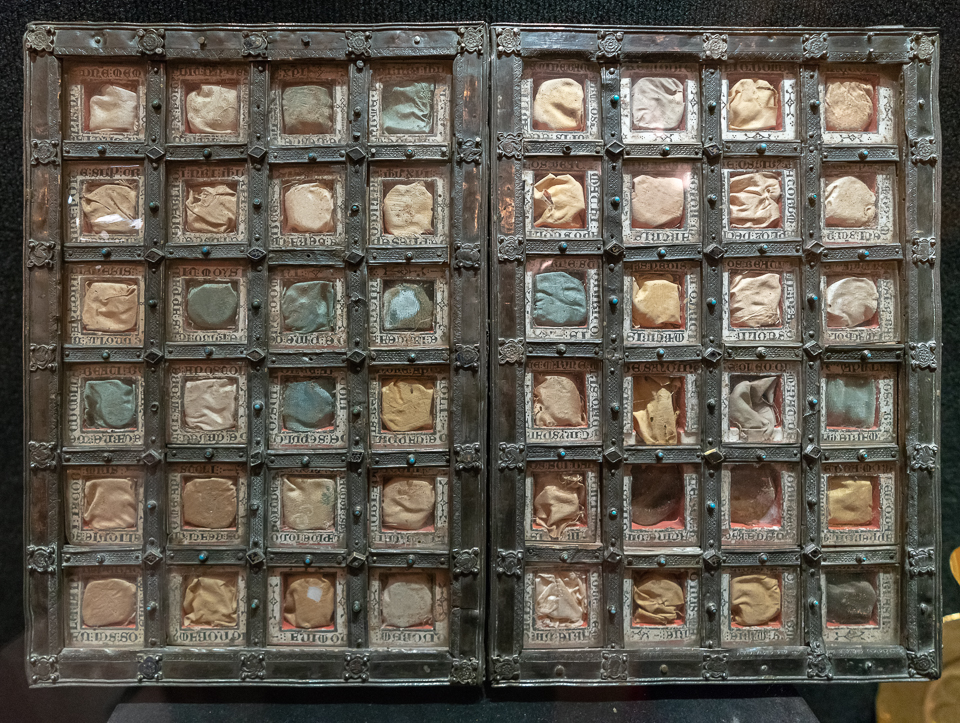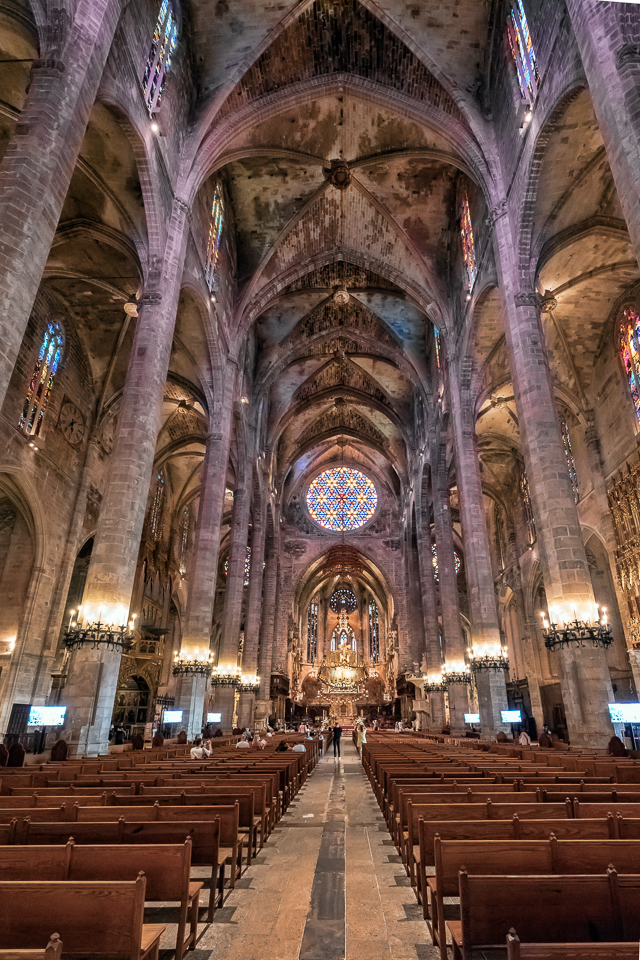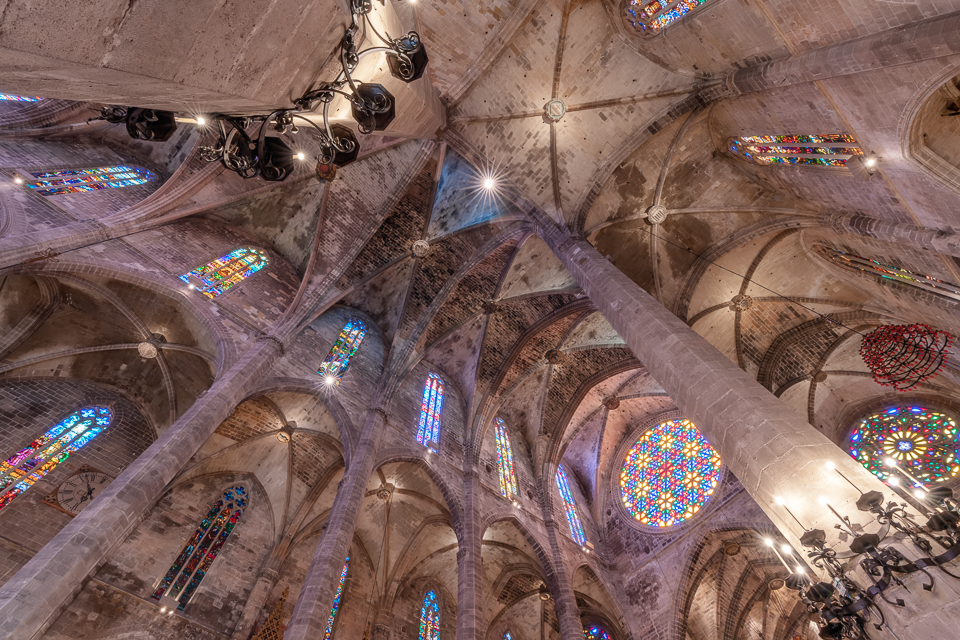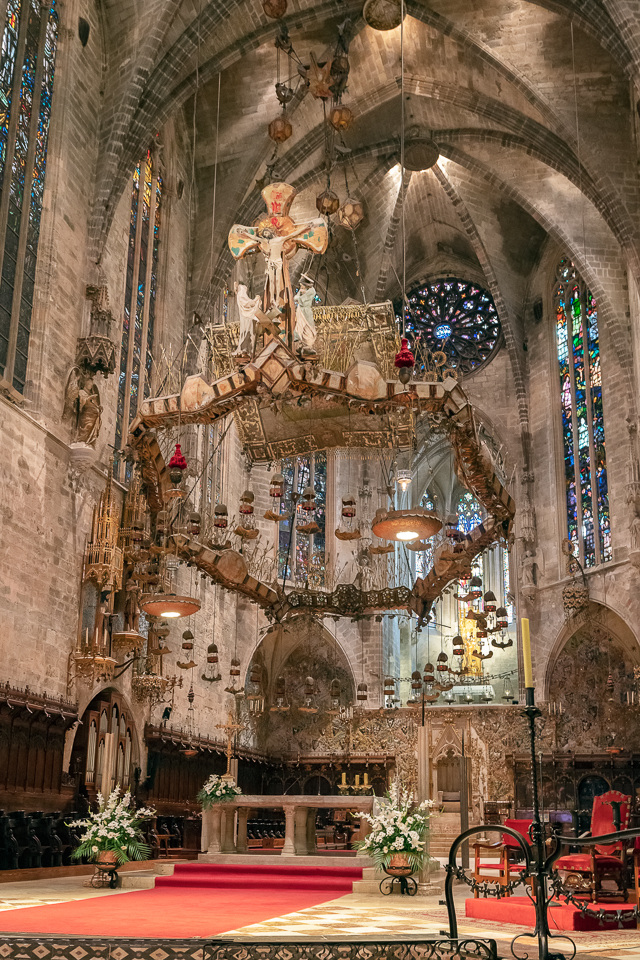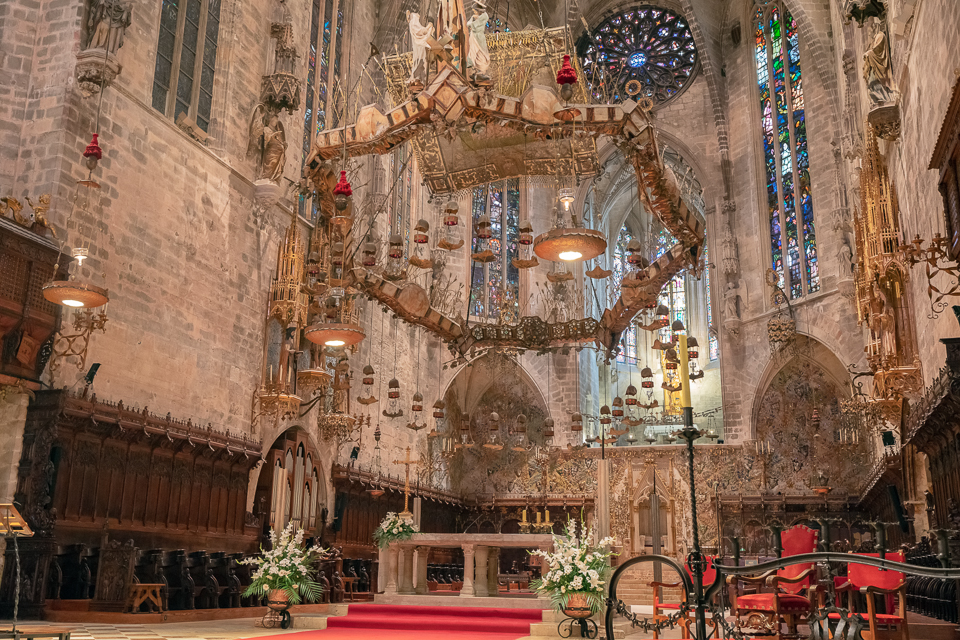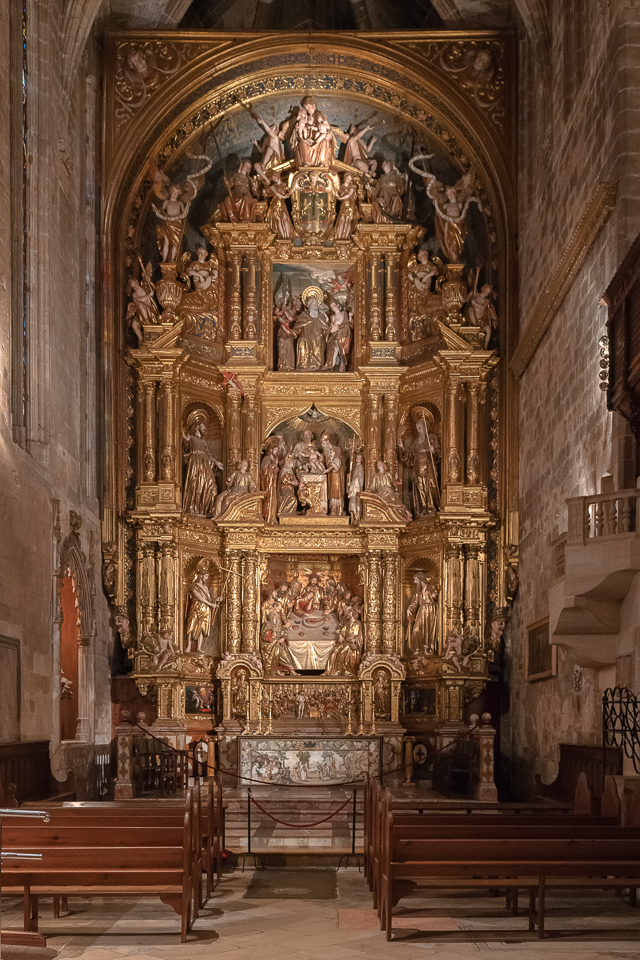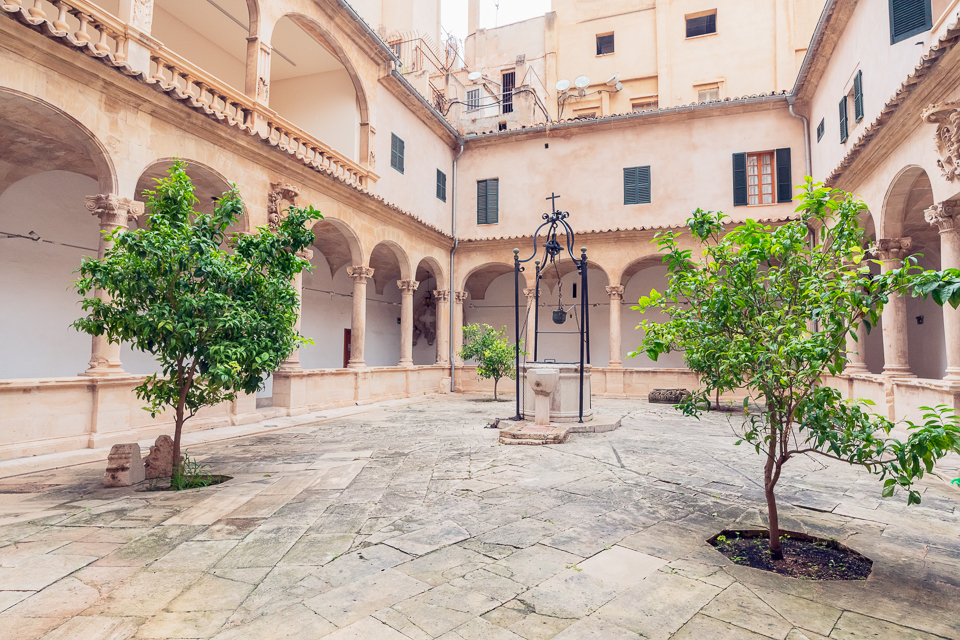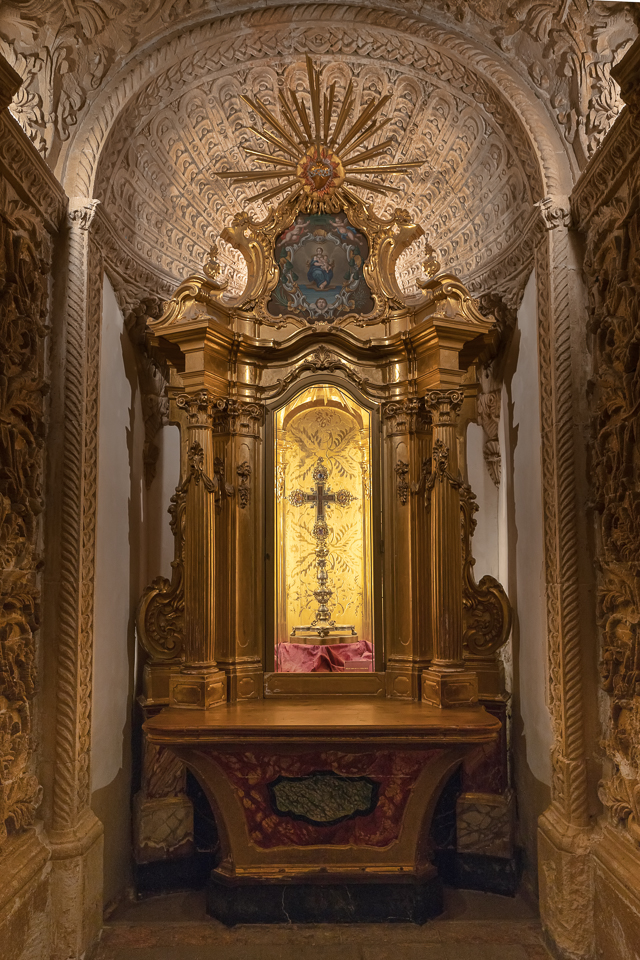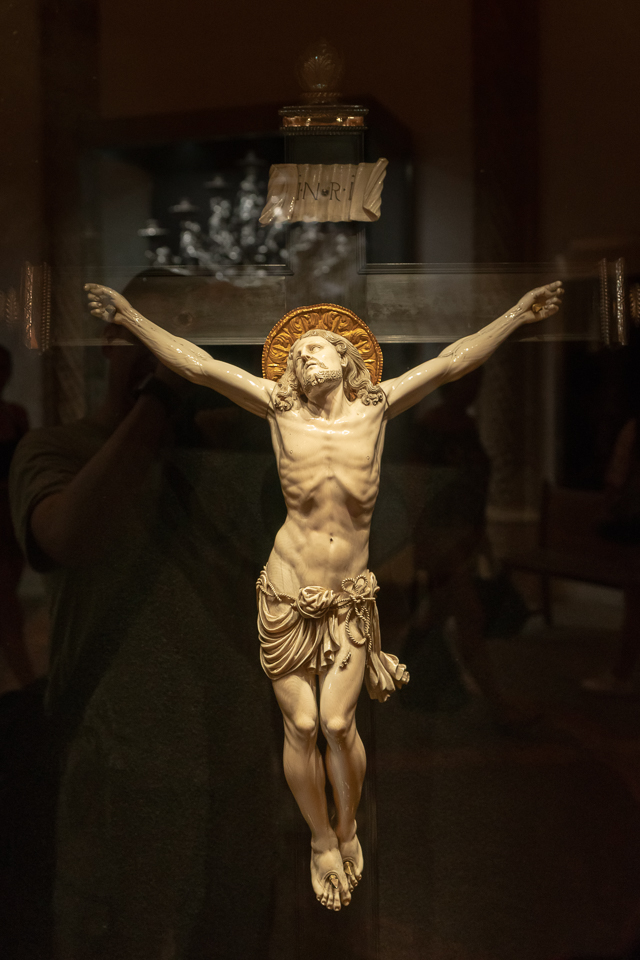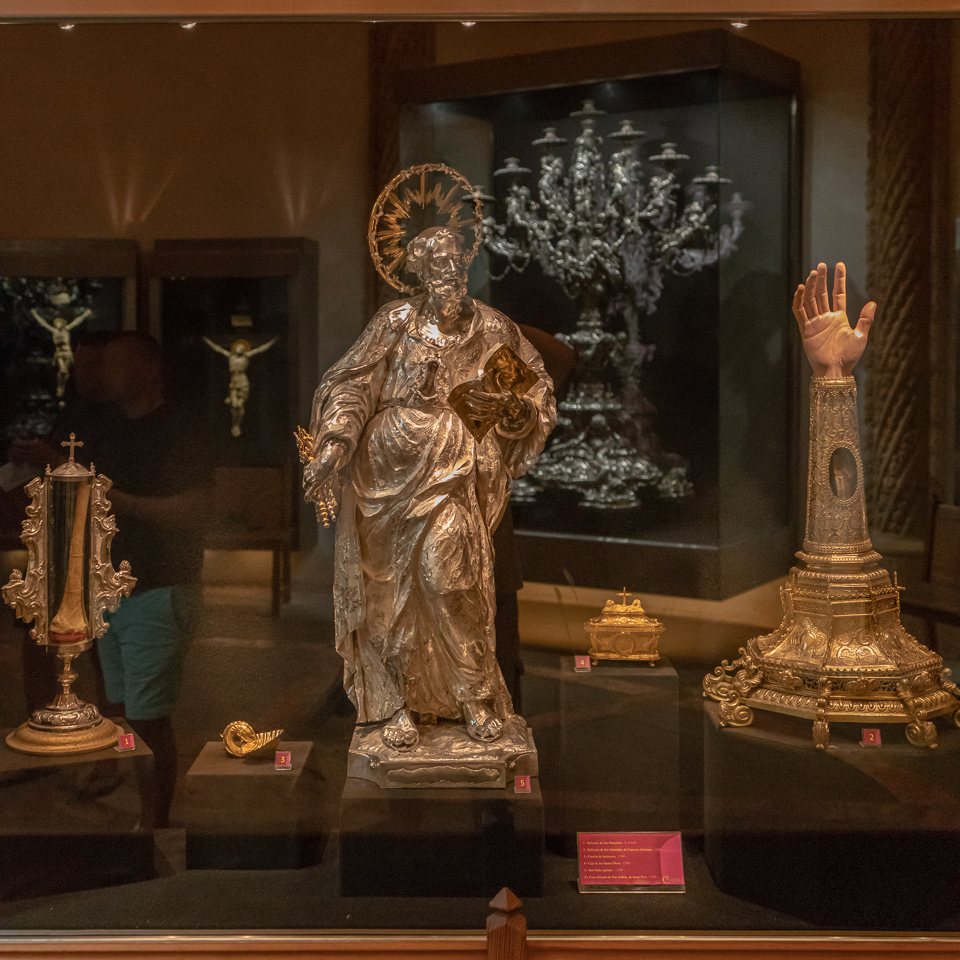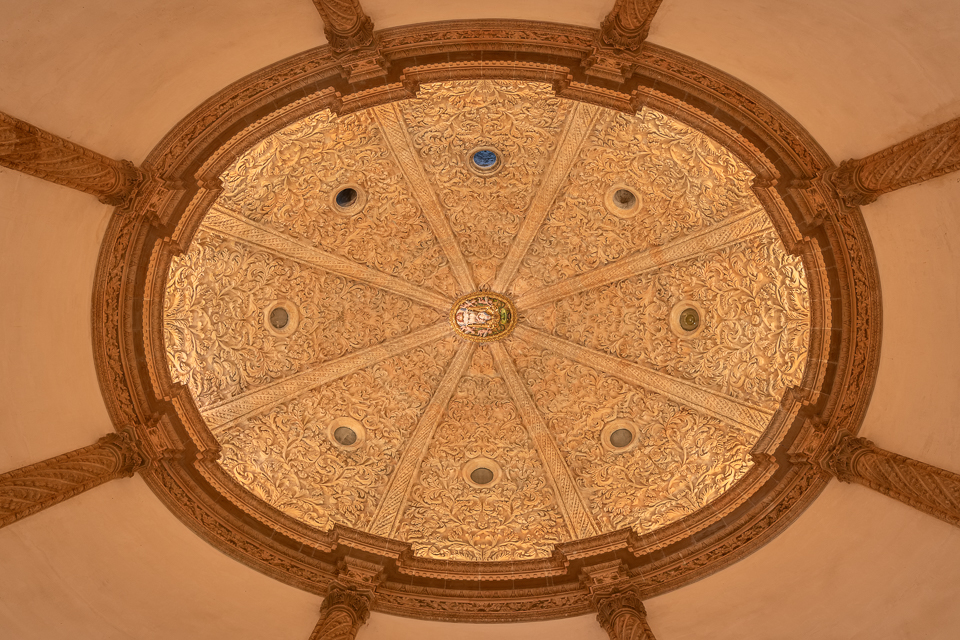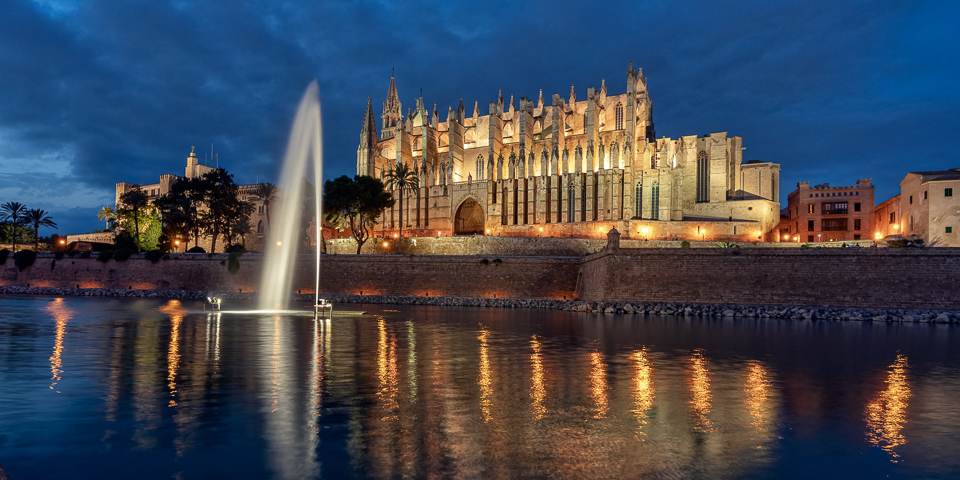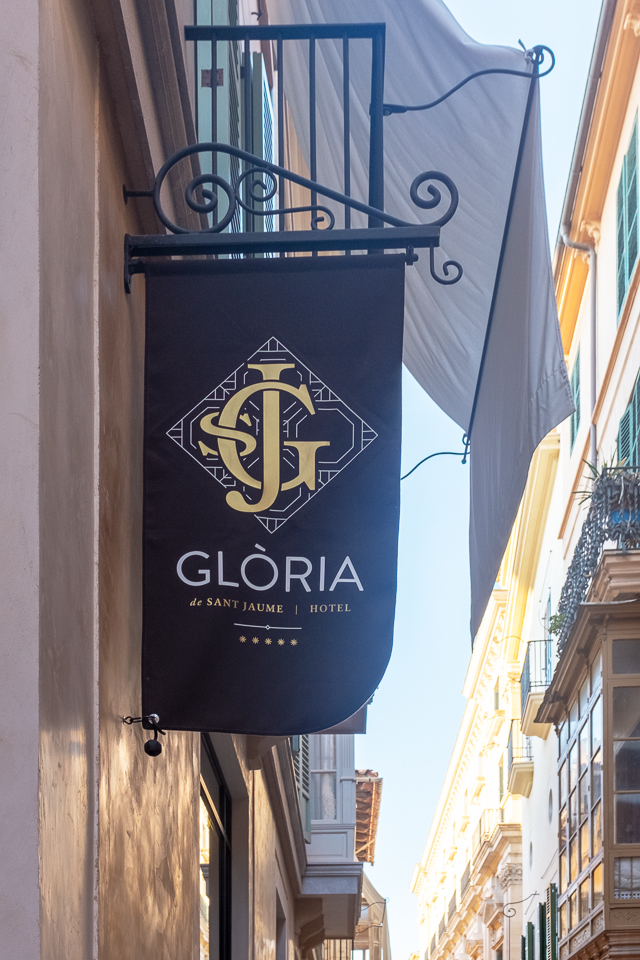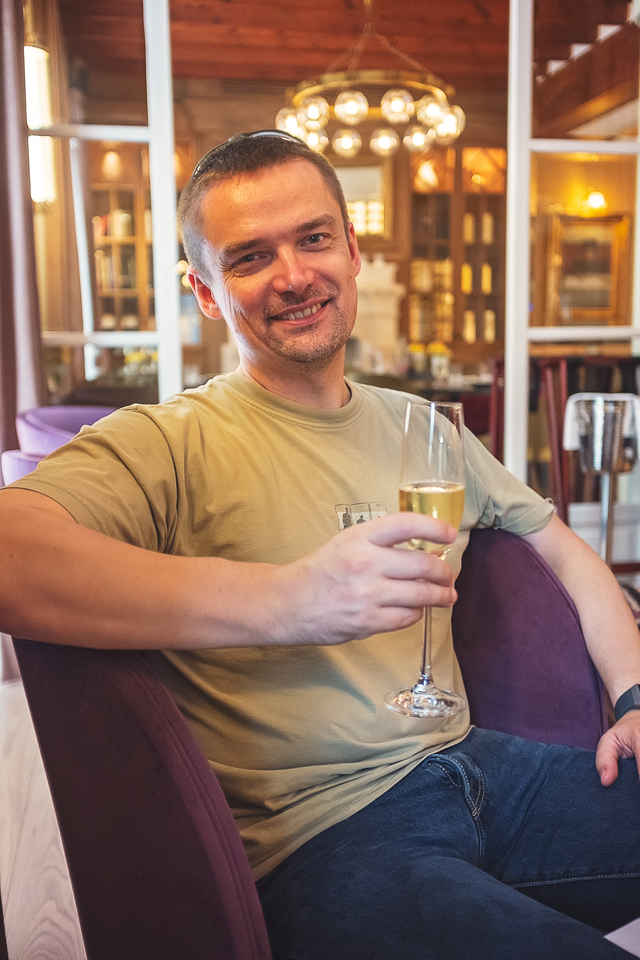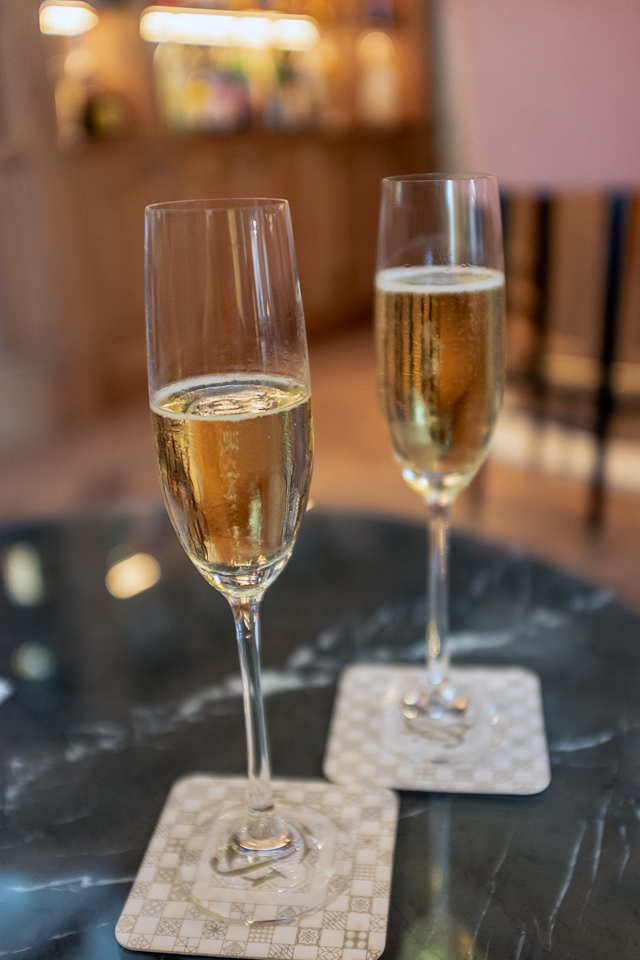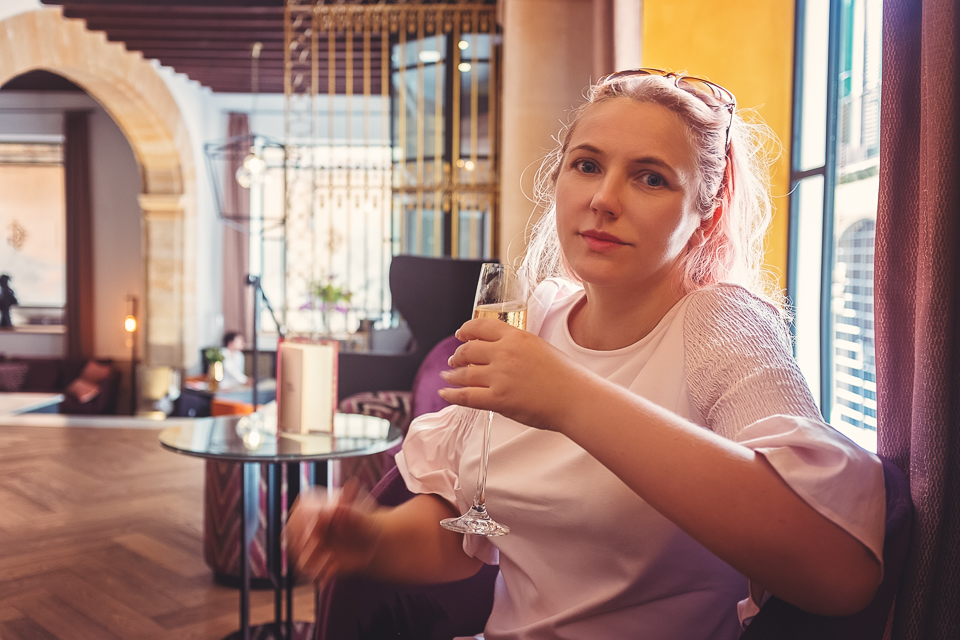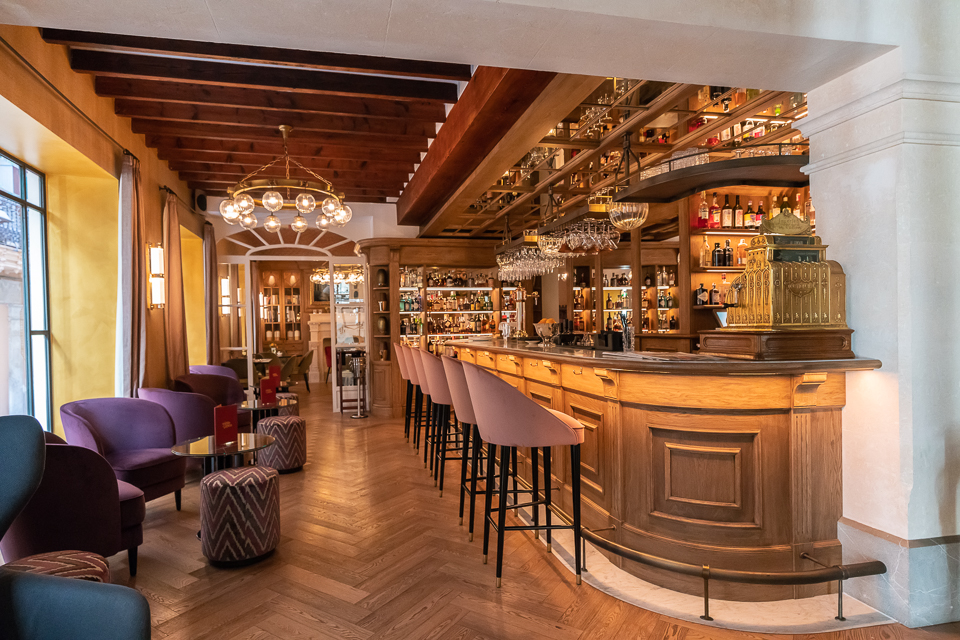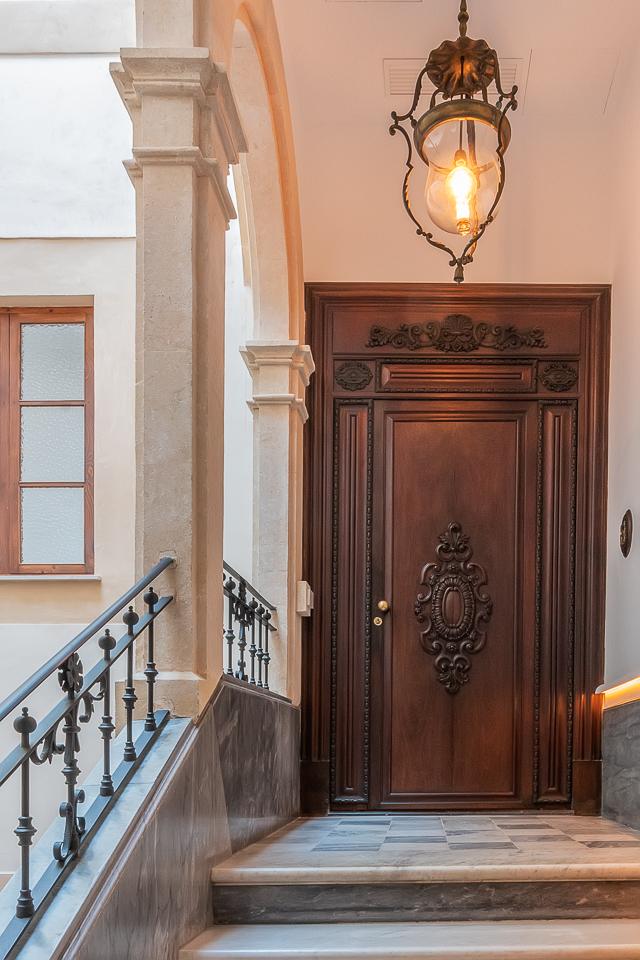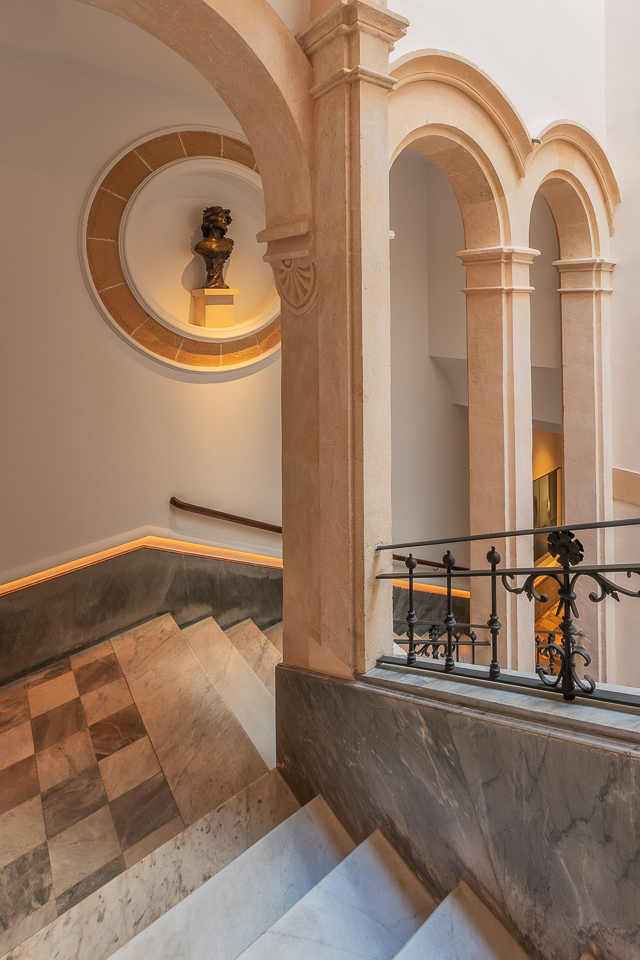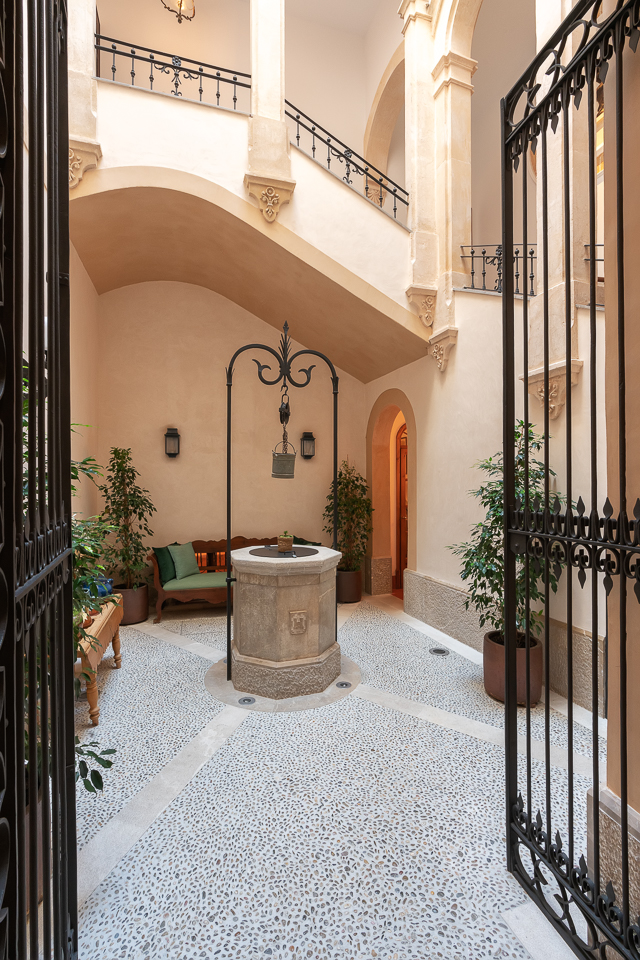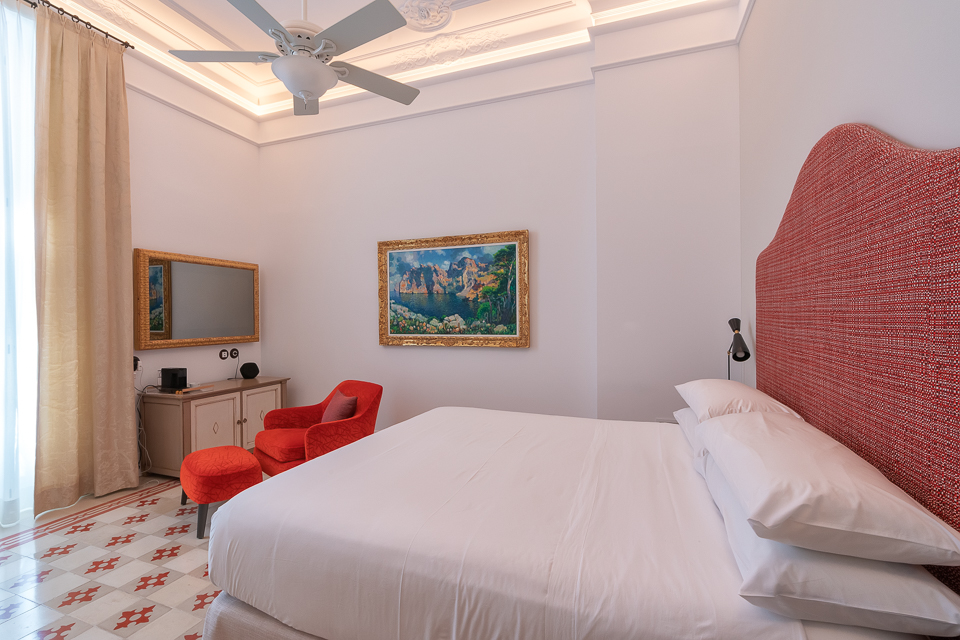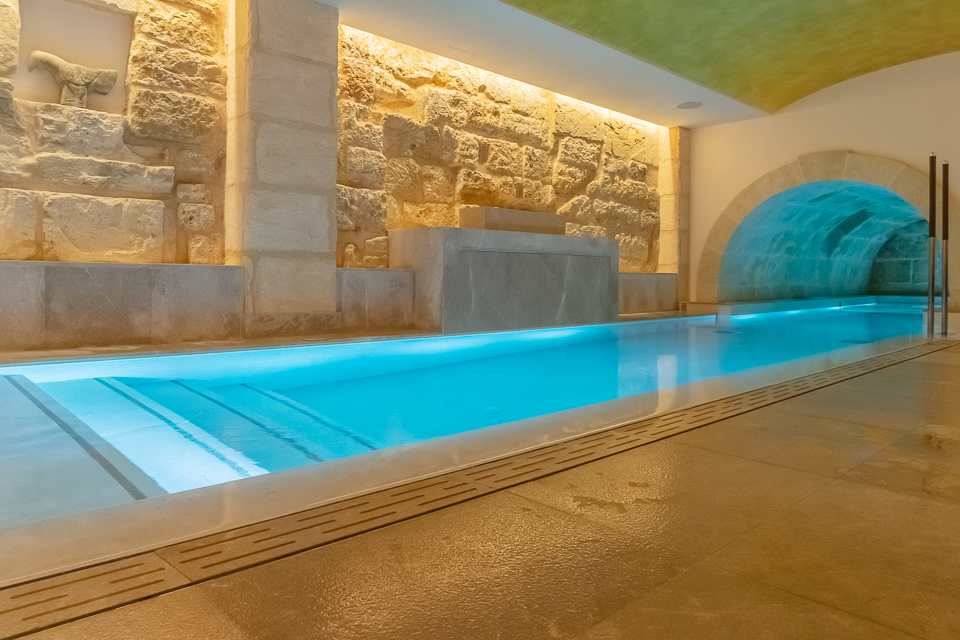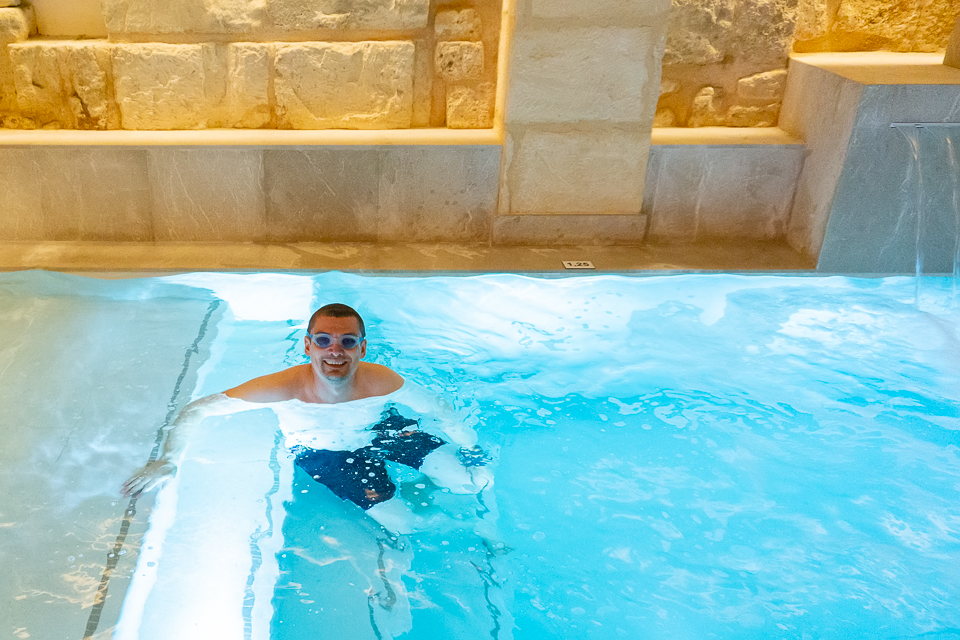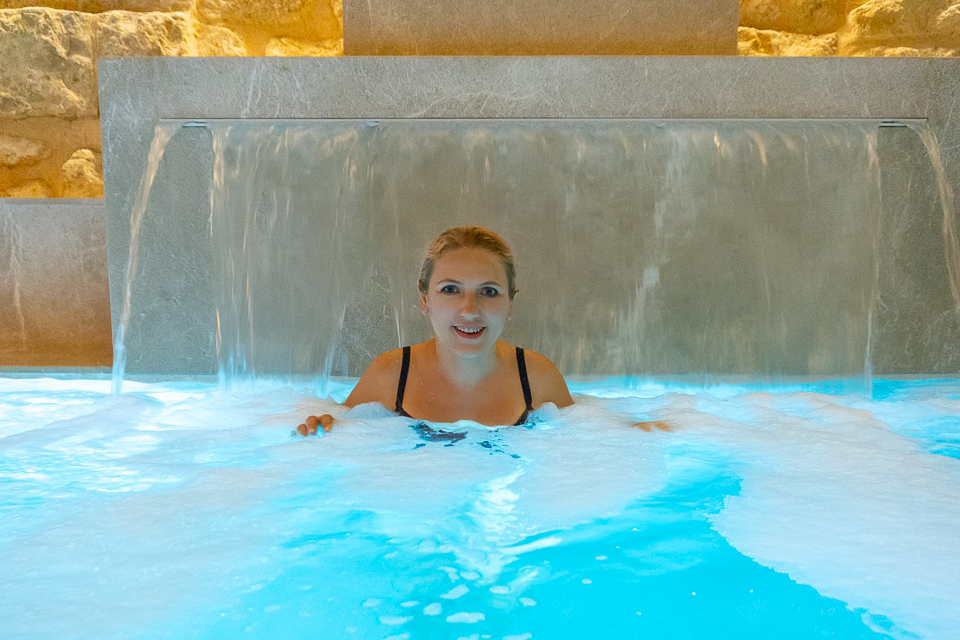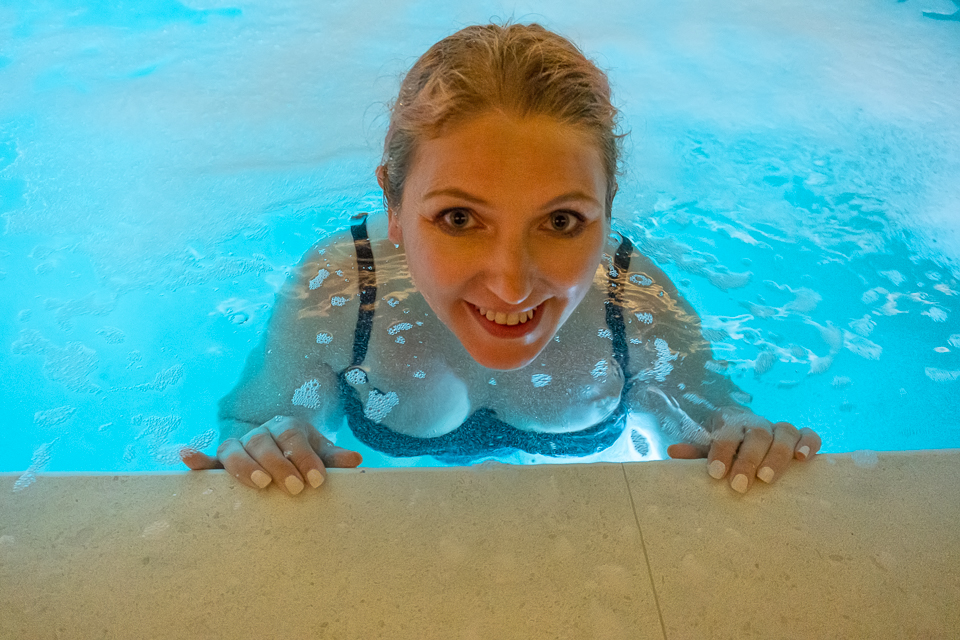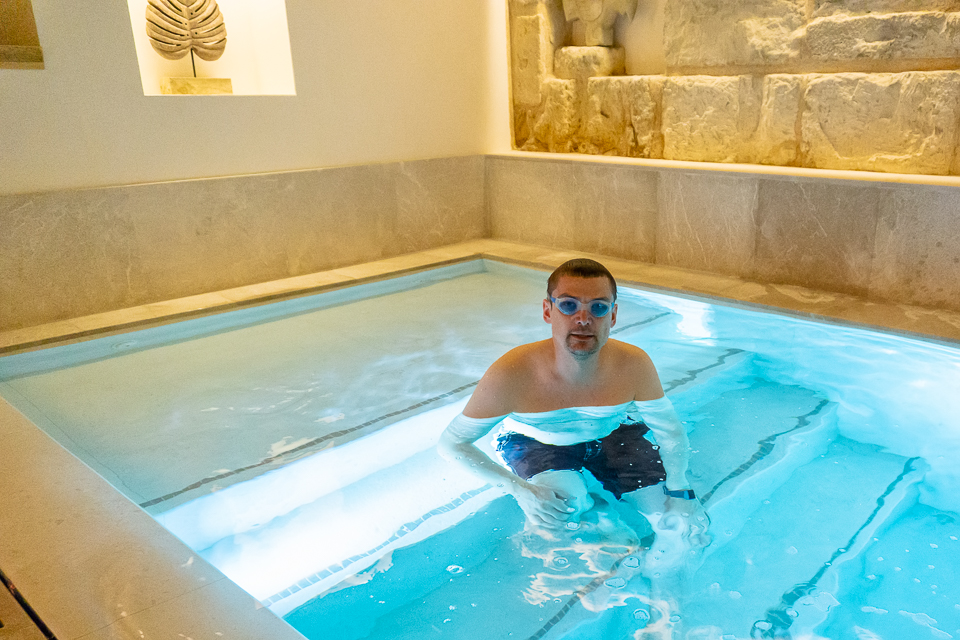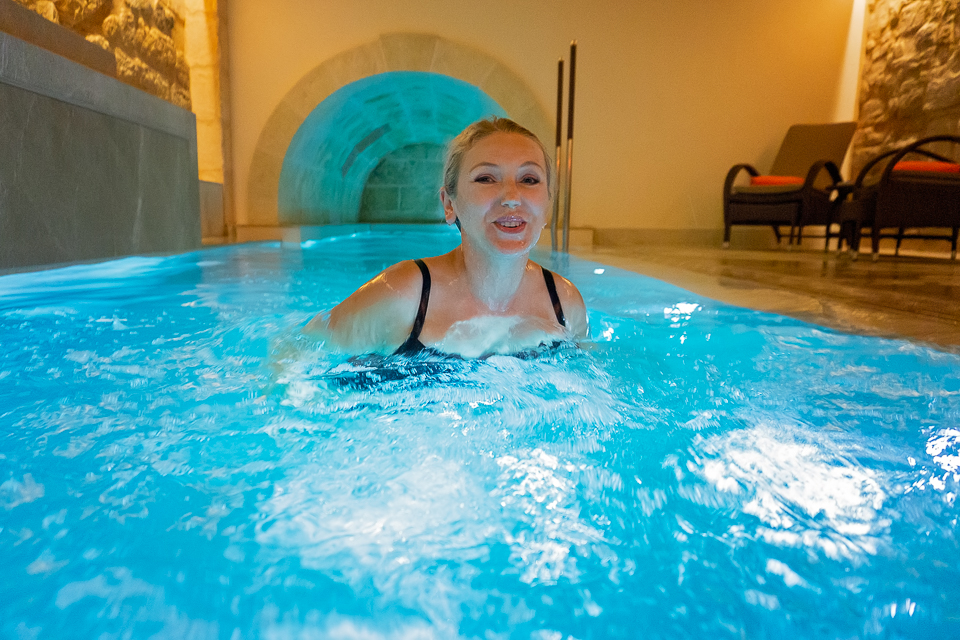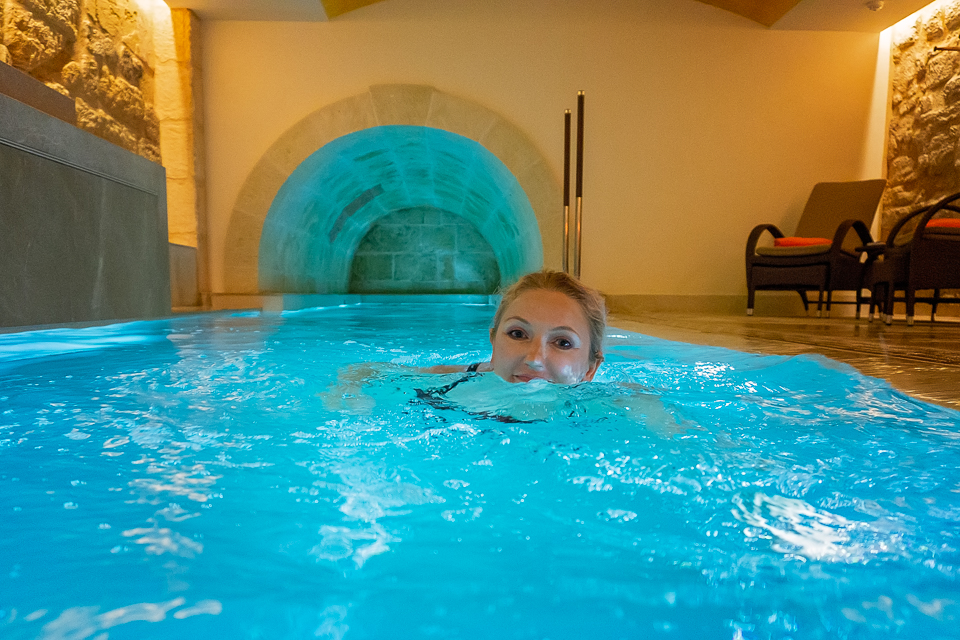Driving from the airport to our hotel we can see for the first time her majesty La Seu, Palma’s vast cathedral standing proudly above the city wall, well visible from the sea, so that no one arriving from there could doubt the might of Mallorca’s Christian Conquerors. Some says La Seu herself resembles a great ship moored at the city edge. We will come this afternoon to gaze up at its tall sandstone walls basking in the golden sun, impressive and proud, adorned with many stained-glass windows.
Po drodze z lotniska do hotelu pierwszy raz widzimy La Seu, katedrę, którą szczyci się Palma, wznoszacą się dumnie ponad murami miasta. Katedra jest dobrze widoczna od strony morza i niektórzy twierdzą, że sama wygląda jak wielki statek zacumowany na skraju miasta. Tego samego popoludnia wybieramy się na wizytę do katedry, obchodząc ją najpierw z zewnątrz i podziwiając skąpane w słońcu sciany ze złotego piaskowca i wielkie witrażowe okna.
After we entered through a side door, we found ourselves in a mini-museum. At the centre we could see a huge gold-plated monstrance from 1585. But our attention quickly went to the portable altar, that used to belong to Jaume I, full of compartments with relics of various saints.
Po wejściu bocznymi drzwiami znalezliśmy się w mini-muzeum. Tu naszą uwagę przykuły dwa eksponaty – wielka pozłacana monstrancja z 1585 roku i przenośny ołtarz z relikwiami różnych świętych, który należał do Jaume I.
Through one of the side chapels we entered to the main cathedral, where light pours in through the world’s largest rose window (nearly 12m across and studded with 1,236 pieces of stained glass). There are six more rose windows, and light filtered through their coloured glass often makes beautiful kaleidoscopic effect. Twice a year, on the dates of November 11 (St Martin’s Day) and February 2 (Candlemas day) an exceptional lighting effect can be observed, due to the chromatic projection of the rose window above the main altar. The light of the rising sun crosses the greater rosette and projects on the opposite wall, just below the other rosette window, so that, for a short period of time, two tangential rosettes can be seen, one of glass and one of light.
In the central aisle 14 tall and thin pillars raise to support the vaulted roof. The nave is 121 metres long and 44 metres high, which makes it one of the tallest between European Gothic churches.
Przez jedną z bocznych kaplic wchodzimy do głównej nawy katedry, gdzie przefiltrowane przez kolorowe szkło światło wpada przez najwieksze na świecie gotyckie rozetowe okno (niemal 12 metrow średnicy wewnętrznej i 1236 elementów witrażu). W katedrze jest jeszcze 6 innych rozetowych okien (2 z nich niestety zasłonięte) i przechodzące przez nie światło tworzy piękne kalejdoskopowe efekty. Dwa razy w roku, w dzień Matki Boskiej Gromnicznej (02.02) oraz na św. Marcina (11.11) wschodzące słońce przefiltrowane przez wielką rozetę odwzorowuje jej kształt i kolory na przeciwległej ścianie, tuż pod innym rozetowym oknem.
La Seu jest przedstawicielką gotyku lewantyńskiego lub śródziemnomorskiego, pozbawioną popularnego w katedrach średniowiecznych klasycznego transeptu. W przejściu głównej nawy 14 wysokich, wąskich kolumn wyciąga się ku sklepieniu, a sama nawa ma długość 121 metrów i wysokość 44, co czyni ją jedną z najwyższych wśród wszystkich gotyckich kościołów Europy (po katedrze w Beauvais i Mediolanie). Wnętrze jest dość surowe, pozbawione nadmiernego przepychu.
Between 1904 and 1914 the restoration work in the cathedral were led by famous Antoni Gaudi. He removed high Baroque altar and shifted choir stalls from the centre to the side of the cathedral. He also installed electric lighting placing lamps and candelabra throughout the church. Above the high altar, Gaudi’s phantasmagorical and very controversial baldachin draws attention with its many hanging lanterns – it was supposed to be made from the wrought iron, but what is visible today is only a trial version, made from cardboard, cork, and brocade.
W latach 1904-1914 prace nad restauracją katedry nadzorował słynny Antoni Gaudi. Usunął on barokowy ołtarz i przeniósł stalle chóru z pozycji centralnej na bok. Zainstalował także światło elektryczne i szereg lamp oraz kandelabrów. Nad głównym ołtarzem zaprojektował natomiast kontrowersyjny baldachim z podwieszanymi latarenkami, mający symbolizować koronę cierniową. Ostateczna konstrukcja miala być odlana z żelaza, ale do dzisiaj znajduje sie jedynie wersja próbna, wykonanan z tektury, korka i brokatu.
There are many side chapels in the cathedral, but one clearly outstanding is Baroque Capella del Corpus Cristi, to the left of the high altar. Its own altarpiece in gilded and polychromed wood is tiered and columned, and features 3 religious scenes: The temptation of St Anthony, the presentation of baby Jesus in the temple and the Last Supper.
Warta uwagi jest także barokowa kaplica Corpus Cristi, znajdująca się na lewo od głównego ołtarza. Jej wielopiętrowy ołtarz, wykonany w pozłacanym i polichromowanym drewnie, przedstawia 3 sceny religijne: Kuszenie św. Antoniego, ofiarowanie dzieciątka Jezus w świątyni i Ostatnią Wieczerzę.
To the east of the belfry is the baroque cloister, constructed around a rectangular patio in the centre of which there is a cistern with a well. The patio is surrounded by four passages, covered with groin vaults made up of twenty rounded arches, six on the long sides and four on the short sides, supported by columns with composite capitals.
Na wschód od dzwonnicy znajduje się barokowy krużganek, wzniesiony wokół prostokątnego patio, na środku którego znajduje się studnia. Wokół patio biegną cztery pasaże ze sklepieniem krzyżowym, składające się z dwudziestu zaokrąglonych łuków: po sześć z nich przypada na dłuższe korytarze i po cztery na krótsze. Wspierają je kolumny z kompozytowymi głowicami.
The Baroque chapterhouse houses the second part of the cathedral museum. Especially worth attention is the High Baroque altar with gilded Sacred Heart and crucifixes depicting Christ as a very muscular man. The entablature of the chapterhouse is supported on eight columns, and the extending from them ribs of the cupula meet at its central keystone which has a medallion depicting the Virgin Mary and the Child seated on a throne, surrounded by eight angels. The cupula is totally covered by plant motifs in relief.
W barokowej kapitule katedry mieści sie kolejna część muzeum. Tutaj szczególnie wart uwagi jest ołtarz z pokrytym złotem Najświętszym Sercem i krucyfiksy z bardzo umięśnionymi postaciami Jezusa. Sklepienie kapituły wspiera osiem kolum, przedłużeniem których jest osiem żeber, które spotykają się w centralnym medalionie, przedstawiającym Najświętszą Pannę z Dzieciątkiem, otoczonych przez 8 aniołów. Kopuła jest cała pokryta roślinnymi płaskorzeźbami.
After some time spent inside we stroll outside to wait in the Parque del Mar for the dusk and evening illumination. From here we can see the most spectacular south façade looking out on to the bay of Palma. Horizontal lines of the cathedra clearly dominate over vertical ones, with its silhouette punctuated by abutments and flying buttresses topped with pinnacles. The cathedral is beautifully reflected in the nearby artificial salt lake and we stay here until it is completely dark, admiring beautiful spectacle of lights and shadows. The evening is warm, peaceful and pleasant, and now it is time to find a good restaurant.
Po zwiedzeniu wnętrza katedry idziemy do Parque del Mar, poczekać aż nadejdzie zmrok i włączy się jej iluminacja. Od strony południowej (tj. od strony morza) La Seu robi największe wrażenie. Widać tu osiem potężnych łuków przyporowych zwieńczonych pinaklami, a pomiędzy nimi 14 mniejszych skarp, dzięki czemu linie pionowe ewidentnie dominują nad poziomymi. Światła katedry pięknie odbijaja się w wodzie sztucznego słonego jeziora, a wieczór jest bardzo ciepły, siedzimy tu więc przez dłuższą chwilę zanim głód zmotywuje nas do poszukania jakiejś przyjaznej restauracji.

